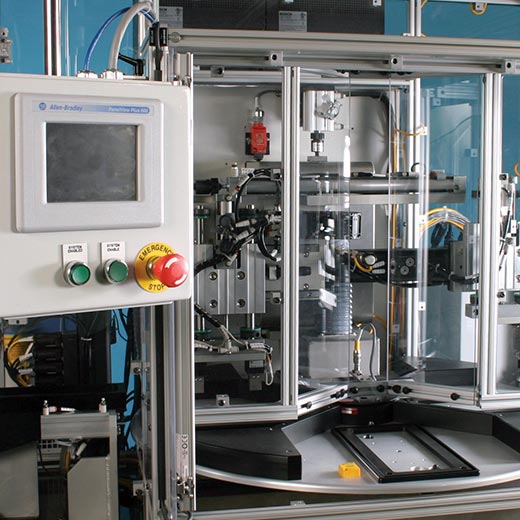
How Much to Invest in Your Manufacturing Process
Let’s say your manager tells you it’s time to increase the degree of automation in your manufacturing process. Your company is starting to have concerns either with the performance of the current process or the threat that it will not be sustainable in the future. Some issues you might be facing could be limited capacity, quality problems or high costs. You may have a new product or product change that must be incorporated into your manufacturing process. Before you decide to make the investment in your manufacturing process, let’s go through some steps you can use to assist you in determining your budget and what you absolutely need to change.
Step 1: Define Success
How will you know your project is successful? Will it be when you’ve reached a certain capacity or production rate? Will it be when you’ve reduced waste by certain percentage? Will it be when you’ve cut costs? All of these are extremely important factors but what problems do you NEED this project to solve to be successful. You may not be able to solve all of your problems at once. Prioritize them so you can see what fits into your budget and schedule.
Step 2: Cost Analysis
Once you’ve determined what you want to achieve you can determine the current costs. How much is it costing you on rejected parts? How much does your labor content cost (including benefits)? What’s the cost for things like warranty returns or the dreaded downtime during a breakdown? What happens if you cannot produce your new product on schedule and in sufficient quantities?
Don’t forget about intangible costs when you are doing this cost analysis. Sometimes it is hard to quantify these, but they could make a big difference when making the decision on how much equipment you need to buy. Consider what it will cost you if you don’t meet your customer’s quantity demands? Are your customers complaining there are too many defects? Is your pricing becoming less competitive? Will you lose sales if the product is not available? Think long term.
The cost analysis is probably the most important step when determining what equipment you need to buy. Not only do you need to understand the cost of your current process but also the costs of not changing your process. This equipment needs to solve your problems and the cost analysis is how you justify the investment.
Step 3: Process Changes
You’ve determined what problems you need to solve with this new process and how much it is costing you in your current process or could cost you if you do nothing. Perhaps if you are changing your current process, you want to consider where you are seeing significant inefficiencies. What is taking up the majority of your time? Are there any processes which could be done in parallel? Is your throughput slowed by lengthy manual steps? These are the places you could focus on improving with your new process.
In some cases, the parts of the process that take the most time can’t be improved in their current form. For example, you may have a part that requires manual inspection or a part that requires an intricate sequence during assembly or functional testing. Your experience tells you where these areas may be. It’s where you spend the most time, it’s the punch list your boss asks you about week after week, it’s the worries that keep you up at night. Consider these and decide what you want to add to the list for consideration during your changes.
Step 4: Budget and Return on Investment
Now that you have identified the process changes that you would like to pursue, you will need to determine if they are justifiable from a financial standpoint. This is where you might need help from a partner with experience in delivering manufacturing solutions to these problems. With some candid discussions, they can tell you if the budget range is reasonable for the changes you are considering and whether those changes are feasible. We’ll go over how to go about finding a partner for this in our next article.
Changes to a manufacturing process can be costly and your budget needs to be supported by the improvements or additions you want to make. If the cost analysis doesn’t justify making all the improvements on your list, you may need to prioritize them and focus on the improvements that will solve your most significant problems. Don’t forget to consider how your company views the payback period and return on investment when considering capital investments. With some creative thinking and good engineering, you are likely to be able to find a combination of helpful solutions with a justifiable cost. Changing your manufacturing process can be a daunting task if you aren’t sure what you need or what you can afford. Hopefully, if you consider these items, you will be able to break it down into manageable parts that will increase your confidence as you discuss the solutions with your management.
Also, keep in mind that a fully automated system isn’t right for every situation. The best solution can be anywhere along the continuum of potential changes from manual to fully automatic. Maybe you just need to automate certain stages of your process or maybe you simply need some updated tooling or process aids. Either way, it’s important to find a company that will partner with you to help you develop the right solution for your situation and your company.
If you’d like to learn more about automation options, check out some of INVOTEC’s past projects at www.invotec.com/project-profiles as a guide. Or if you’d like some advice from one of our application experts, click here to contact a member of INVOTEC’s solutions team.
Check out the other articles in this “Changing Your Manufacturing Process” Series, see below…
Part 1: 5 Indicators it Might be Time to Change Your Manufacturing Process
Share this Post
